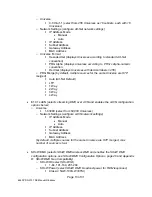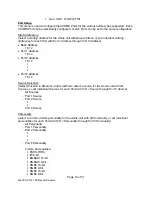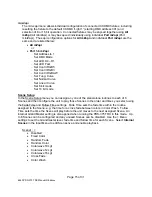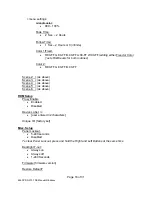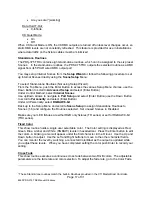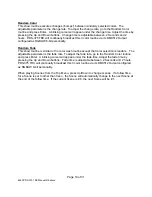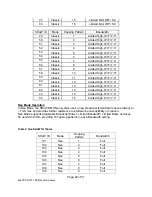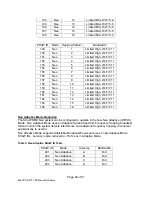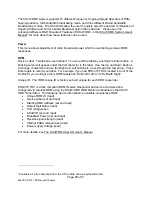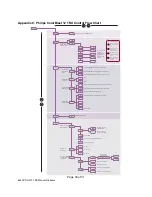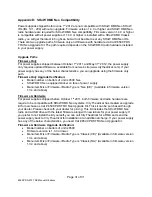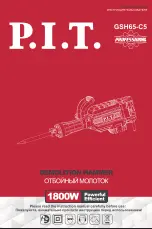
Page 25 of 31
6550 PDS-375 TRX Manual R6.docxx
The SHoW DMX System supports 16 different Frequency Hopping Spread Spectrum (FHSS)
hopping patterns, full bandwidth broadcasting mode, and three different limited bandwidth
broadcasting modes. The SHoW IDs allow the user to quickly select the desired combination of
Hopping Pattern and Full or Limited Broadcast option that is desired. Please see
The
Advanced Wireless DMX Broadcast Features
of SHoW DMX in the SHoW DMX System User’s
Manual
for more about how these features can be used.
Power
This menu allows adjustment of radio broadcast power which is used during wireless RDM
responses.
RDM
Device Label: This label is user defined. You can edit the label by pushing the Enter button. A
blinking cursor will appear under the first character in the label. Use the Up and Down Buttons
to change characters and use the Right and Left buttons to move through the text string. Press
Enter again to record your label. For example, if you had PDS-375 TRXs located in front of the
DJ Booth, you could give them RDM Labels like “DJ Booth Left” and “DJ Booth Right”
Unique ID: The RDM unique ID is factory set and unique for each RDM responder.
PDS-375 TRX is a fully compliant RDM Receive Responder and can be monitored and
configured via wireless RDM using the SHoW DMX RDM Monitor (embedded in the SHoW
DMX Transmitter). The following device information is available via wireless RDM:
•
Unique RDM ID (read)
•
Device Label (set and read)
•
Starting DMX Address (set and read)
•
Output fault status (read)
•
Port
configuration
•
SHoW ID (set and read)
•
Broadcast Power (set and read)
•
Receive signal strength (read)
•
Internal PCBA temperature (read)
•
Power supply voltage (read)
For more details, see The SHoW DMX System User’s Manual.
2
Available as a free download from the CTI website at www.citytheatrical.com



